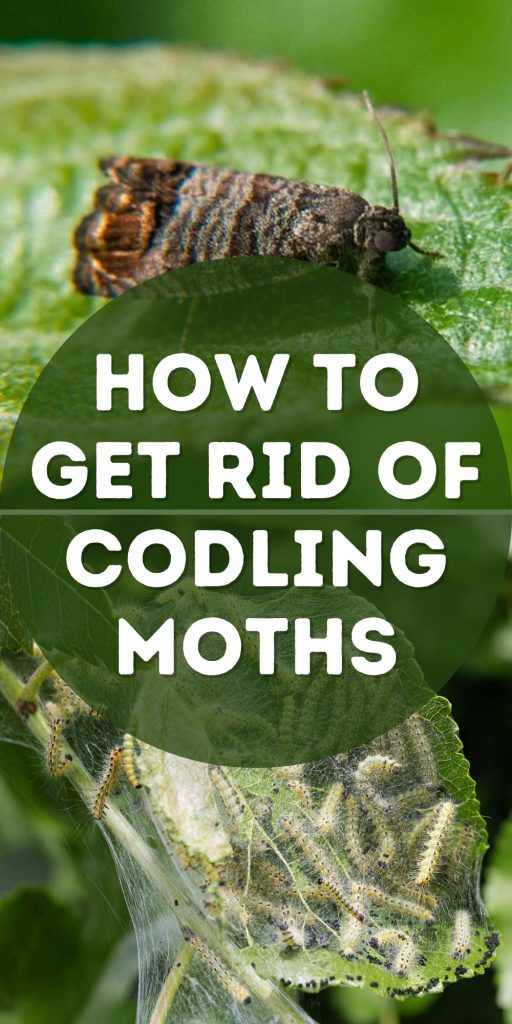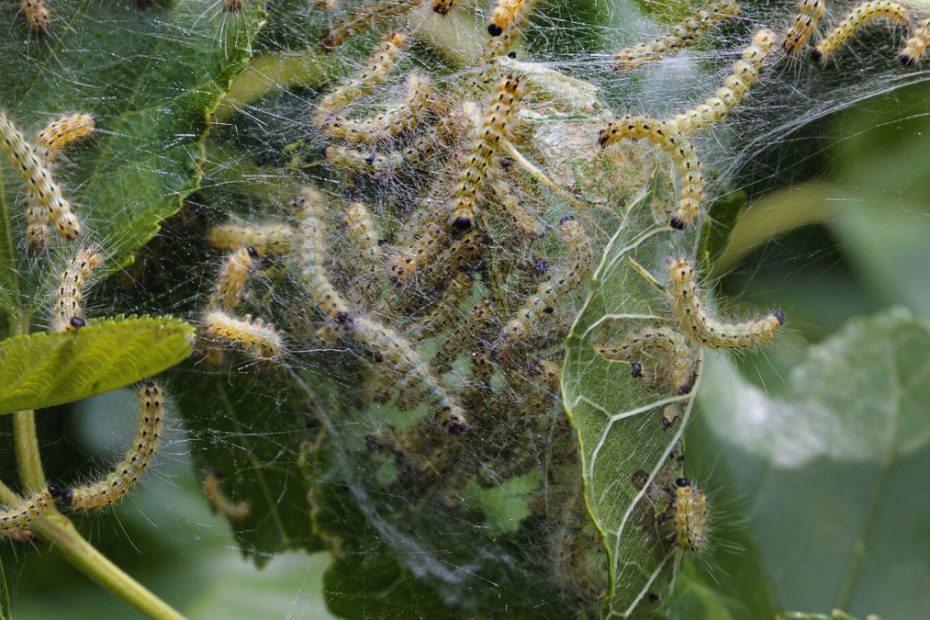If your apple or pear trees are producing wormy, damaged fruit, chances are you’re dealing with codling moths. These pesky insects can wreak havoc on your harvest, turning your hard work into a frustrating mess. But don’t worry—you can take effective steps to protect your trees and enjoy healthy, delicious fruit.
Understanding the life cycle of codling moths is crucial in combating them. By targeting the right stages, you can significantly reduce their population and minimize damage. From simple organic methods to more involved solutions, there are various strategies to keep these pests at bay. Ready to reclaim your fruit trees? Let’s jump into the best ways to get rid of codling moths.
Key Takeaways
- Understanding the Life Cycle: Knowing the stages of codling moths’ life cycle—egg, larval, pupal, and adult—is crucial for effective intervention and population control.
- Signs of Infestation: Look for entry holes, frass, premature fruit drop, and adult moths, using tools like pheromone traps for early detection.
- Preventative Measures: Practices like proper orchard sanitation, the use of resistant fruit varieties, and pruning help keep codling moth populations under control.
- Organic Controls: Implementing natural solutions such as beneficial insects, homemade traps, and biological pesticides can reduce codling moth numbers without harming the environment.
- Chemical Controls: Choose the appropriate pesticides, ensure accurate application, and follow safety precautions to manage severe infestations effectively.
- Monitoring and Maintenance: Regular inspections and seasonal management practices help identify early signs, enabling timely interventions to protect your orchard.

Understanding Codling Moths
Codling moths, which primarily target apple and pear trees, can significantly damage your fruit harvest. Grasp the moth’s life cycle and recognize signs of infestation to safeguard your produce effectively.
Life Cycle Of Codling Moths
Understanding the lifespan of codling moths enables you to combat them more efficiently. Codling moths have four main stages:
- Egg stage: Female moths lay eggs on the leaves or fruit of host trees. These eggs hatch in about a week.
- Larval stage: Newly hatched larvae bore into the fruit, creating tunnels and feeding on the pulp. This stage lasts approximately three to five weeks.
- Pupal stage: Larvae exit the fruit and pupate in tree bark, soil, or debris. This stage can last several weeks to months, depending on environmental conditions.
- Adult stage: Newly emerged moths mate and lay eggs, repeating the cycle. There are typically two to three generations per year, with the first occurring in late spring.
Signs Of Infestation
Detecting an infestation early helps manage and reduce damage. Look for these signs:
- Tunnels and entry holes: Visible tunnels and small holes on the fruit’s surface suggest larval activity.
- Frass: A reddish-brown, granular substance, called frass, around entry holes is a clear indication larvae are inside the fruit.
- Premature fruit drop: Infested fruit often falls from the tree before ripening.
- Adult moths: Use pheromone traps to monitor and capture adult moths, which helps gauge infestation levels.
Regularly inspect your trees for these signs, especially during peak moth activity periods. Early detection allows for timely interventions, helping you protect your fruit trees from significant damage.
Preventative Measures
Codling moth infestations can devastate apple and pear trees, but preventive actions can protect your orchard.
Proper Orchard Sanitation
Keeping your orchard clean and free of debris reduces codling moth populations.
- Remove Fallen Fruit: Collect and dispose of any fallen fruit, which can harbor larvae.
- Prune Regularly: Trim tree branches to increase air circulation and reduce hiding places for moths.
- Clean Up Debris: Remove leaves and other organic waste from the ground that can shelter pests.
- Inspect and Dispose: Regularly check for infested fruit and dispose of them to prevent larvae from pupating.
Use Of Resistant Varieties
Planting resistant fruit tree varieties can help reduce codling moth infestations.
- Choose Resistant Cultivars: Select apple and pear varieties known for their resistance to codling moths. Examples include ‘Liberty’ and ‘Redfree’ apples.
- Diversify Plantings: Mix resistant varieties with susceptible ones to reduce the overall impact of codling moths.
- Consult Local Resources: Check with local agricultural extensions for region-specific resistant varieties.
Implementing these measures can keep your orchard healthy and productive.
Organic Controls
Implementing organic controls can significantly reduce codling moth populations without harming the environment. The following methods focus on natural solutions to effectively combat these pests.
Beneficial Insects
Use beneficial insects to help manage codling moths. Here are some insects that can aid in control:
- Trichogramma wasps: Parasitic wasps that lay eggs inside codling moth eggs, preventing them from hatching.
- Tachinid flies: Parasites that target codling moth larvae, reducing their numbers.
- Predatory beetles: Beetles like the green lacewing feed on codling moth eggs and larvae.
Introducing these beneficial insects can create a balanced ecosystem, reducing the need for chemical interventions.
Homemade Traps
Homemade traps offer an eco-friendly approach to capturing and monitoring codling moths. Here are two effective types:
- Pheromone traps: Use synthetic female pheromones to lure male moths into sticky traps, disrupting mating cycles.
- Molasses mixture: Combine molasses, vinegar, and water in a container. Hang these traps near fruit trees to attract and drown codling moths.
Regularly check and replace traps to maintain effectiveness throughout the season.
Biological Pesticides
Biological pesticides present another organic option for controlling codling moths. Common choices include:
- Bacillus thuringiensis (Bt): A bacterium that produces toxins harmful to codling moth larvae but safe for other beneficial insects and humans.
- Codling moth granulosis virus (CpGV): A virus specifically targeting codling moth larvae, significantly reducing their population.
Apply these pesticides according to package instructions, ensuring proper timing and coverage for maximum efficacy.
Chemical Controls
Chemical controls can effectively mitigate codling moth infestations when applied correctly. These strategies involve selecting the right pesticide, using proper application techniques, and adhering to safety precautions.
Selecting The Right Pesticide
Choosing an appropriate pesticide is crucial for controlling codling moth populations.
- Organophosphates: These are broad-spectrum insecticides like phosmet, which disrupt the nervous system of insects.
- Carbamates: Carbaryl is a common example, effective against codling moth larvae.
- Insect Growth Regulators (IGRs): Products like methoxyfenozide target larvae by disrupting their development.
- Neonicotinoids: Imidacloprid is a systemic insecticide that affects the central nervous system of pests.
- Spinosyns: Spinosad, derived from soil bacteria, targets the larvae and adult stages of moths.
Proper Application Techniques
Application accuracy ensures optimal pesticide effectiveness while minimizing environmental impact.
- Timing: Apply during peak activity periods, typically late spring and mid-summer.
- Coverage: Ensure thorough coverage on leaves, branches, and fruit for maximum efficacy.
- Dosage: Follow label instructions precisely to avoid under- or over-application.
- Equipment: Use calibrated sprayers to ensure even distribution.
Safety Precautions
Safety measures protect you and others when applying chemical controls.
- Protective Gear: Always wear gloves, masks, and long sleeves to prevent skin and respiratory exposure.
- Mixing: Mix pesticides in well-ventilated areas away from pets and children.
- Storage: Store chemicals in labeled, sealed containers away from food and water sources.
- Disposal: Follow local guidelines for disposing of pesticide containers and any leftover chemicals.
Using chemical controls effectively involves selecting the right pesticide, ensuring accurate application, and adhering to strict safety protocols. These steps help protect your orchard from codling moths while maintaining a safe environment.
Monitoring And Maintenance
Effective practices for monitoring and maintenance keep codling moth populations under control and ensure healthy orchards. Carry out regular inspections and seasonal management practices to detect and manage infestations.
Regular Inspection
Regular inspections help identify early signs of codling moth activity. Conduct these steps weekly during peak activity periods:
- Visual Checks: Examine fruit for entry holes and frass. Inspect bark and leaves for larvae and pupae.
- Trap Monitoring: Place pheromone traps to catch adult moths. Check traps weekly and keep a log of moth captures.
- Fruit Sampling: Select random fruits and cut them open to check for larvae. Document findings for trend analysis.
These steps enable early detection, making it easier to manage infestations before they spread.
Seasonal Management Practices
Seasonal management practices align with the codling moth lifecycle and significantly reduce infestation risks. Carry out these practices at key times of the year:
- Spring:
- Clean Debris: Remove fallen fruit and debris from around trees.
- Apply Horticultural Oils: Use oils to smother overwintering eggs and larvae.
- Set Traps: Install pheromone traps before moths begin to emerge.
- Summer:
- Use Biological Controls: Release beneficial insects like Trichogramma wasps.
- Monitor Traps: Keep checking and maintaining pheromone traps.
- Apply Organic Sprays: Use biological pesticides such as Bt or CpGV.
- Fall:
- Remove Infested Fruit: Dispose of any fruit showing signs of infestation.
- Clean Up: Clear fallen leaves and dead branches to remove potential pupation sites.
- Inspect and Prune: Prune trees to remove hiding spots for larvae and pupae.
Adapting these practices throughout the year maintains orchard health and minimizes codling moth damage.
Conclusion
Successfully managing codling moths involves a multifaceted approach. By understanding their life cycle and recognizing the signs of infestation, you can take proactive steps to protect your fruit trees. Implementing preventative measures like proper orchard sanitation and planting resistant varieties can significantly reduce the risk of infestations.
Utilizing organic control methods and beneficial insects helps create a balanced ecosystem, while homemade traps and biological pesticides offer effective, environmentally friendly options. When necessary, carefully selected and correctly applied chemical controls can provide additional protection.
Regular monitoring and seasonal management practices are essential for maintaining healthy orchards and ensuring a bountiful harvest. By staying vigilant and employing a combination of strategies, you can effectively combat codling moths and enjoy pristine fruit from your trees.
Frequently Asked Questions
What is a codling moth and why is it a problem for fruit trees?
Codling moths are pests that primarily damage apple and pear trees. They lay eggs on leaves or fruit, and their larvae bore into the fruit, causing it to become wormy and ruined.
How can I identify a codling moth infestation in my orchard?
Signs of infestation include visible tunnels and entry holes on fruit, frass (reddish-brown substance) around entry points, premature fruit drop, and the presence of adult moths. Regular inspections during peak moth activity periods are crucial for early detection.
What are the main stages of the codling moth’s life cycle?
The codling moth’s life cycle has four main stages: egg, larval, pupal, and adult. Understanding these stages helps in effectively managing their populations.
What preventative measures can I take to protect my orchard from codling moths?
Preventative measures include proper orchard sanitation such as removing fallen fruit, regular pruning, cleaning debris, inspecting for infested fruit, planting resistant fruit tree varieties, and diversifying plantings.
Are there organic methods to control codling moth populations?
Yes, beneficial insects like Trichogramma wasps and tachinid flies, as well as homemade traps and biological pesticides like Bacillus thuringiensis (Bt) and codling moth granulosis virus (CpGV), are effective organic control methods.
When should I consider using chemical controls for codling moths?
Chemical controls should be used when organic methods are insufficient to manage the infestation. Selecting the right pesticide and applying it correctly is crucial to minimizing environmental impact.
How can I effectively apply chemical pesticides to control codling moths?
Effective application involves proper timing, ensuring adequate coverage, accurate dosage, and using the right equipment. Safety precautions such as wearing protective gear and proper storage and disposal of chemicals are also essential.
What regular monitoring and maintenance practices help control codling moth populations?
Regular inspections, trap monitoring with pheromone traps, fruit sampling, and seasonal management practices such as cleaning debris, applying horticultural oils, using biological controls, and removing infested fruit are important for maintaining orchard health.
